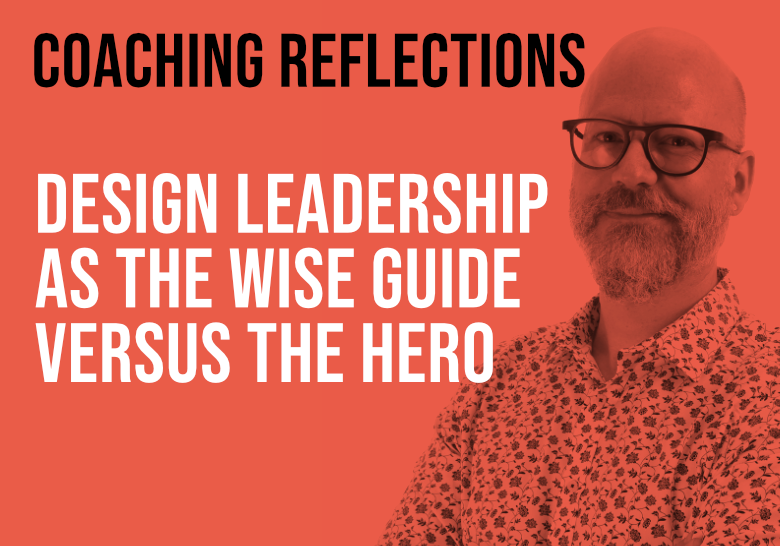Are you the hero or the wise guide in the story of your work and leadership?
This week I’m teaching a masterclass on storytelling, pitching and getting buy-in for the Service Design Network Academy and we’re exploring classic story structures and also think about what journey our org or client is on.
Here are some thoughts about design taking a role as wise guide rather than being the hero of the story (even though our egos might like the idea of that).
Transcript
Intro
[00:00:00] Andy Polaine: Are you the hero or the wise guide in the story of your work and leadership?
Every week I spend my days coaching design leaders and in these videos, I reflect upon the common themes and questions that come up in the week.
What story are you in?
[00:00:11] Andy Polaine: This week, I’m teaching a masterclass on storytelling pitching and getting buy-in for the Service Design Network Academy. And we’re exploring classic story structures and also thinking about what journey our organization or client is on. So sometimes that’s defeating the monster. If you’re in retail, that’s obviously Amazon for you at the moment. Sometimes it’s rebirth. I think this is what telcos and banks and even TV is going through at the moment. Or maybe this also has apprentice, which seems to be the story of AI right now.
The Hero’s Journey
[00:00:40] Andy Polaine: Joseph Campbell’s classic hero’s journey always comes up and in that structure, the hero goes on this journey, moving from a known to an unknown land. In work, you see that whether it’s a project doing something new or a huge transformation, you see the same structure going on and the same kind of trials and tribulations.
The Wise Guide
[00:00:57] Andy Polaine: And in these there’s always a sidekick. A mentor or a guide of some kind. In Star Wars, classically it’s Obi Wan Kenobi for Luke. In Shrek is Donkey. In finding Nemo is Dory and you see it all the time.
And often that person gives the hero a map of some kind, gives them some direction, tells them where to go. They often show or demonstrate a new way of being as well, rather than just telling. And sometimes in the case of Donkey in Shrek, they have no filter or fear of the heroes complexes. Donkey, tells Shrek exactly what he needs to hear. Donkey just speaks truth to power.
Design as the Guide, not the Hero
[00:01:34] Andy Polaine: This role, I think is leadership. It’s leadership from the side or leadership from behind. And it’s a supporting role. It’s not the hero role. And given where design is at the moment, I actually think design sits better here.
We have the skills for it. We have the sense of reading people and understanding people. Not everyone has those skills, not even the hero of the story, which is why they need that guide. I think this is something that is really suited to what we do. We often do give the map, literally, the journey map, the blueprint of here’s where the organization is struggling. Often it is our job to speak truth to power. It might not work out quite so well if you do exactly like Donkey in Shrek and do it without filter, but one of the things about Donkey played by Eddie Murphy is he is very funny and there’s a lot of true words said in jest.
We also have the skills to show rather than tell. And this is the thing that design people bring to the leadership table. And we often forget about it, I think, because it seems self evident to us and for everyone else being able to make a diagram or sketch something or make a demo or prototype something, it’s kind of like magic to them. It’s The Force.
I don’t think we need to apologize about taking that wise guide role. That’s a version of servant leadership that I can get behind rather than the kind of martyrdom I talked about in another video.
Outro
[00:02:47] Andy Polaine: I hope that’s useful for you. If you would like to check out my coaching practice, it is at polaine.com/coaching. And I’ll put the link below. If you’ve got any of your own stories or examples, please post a comment below. I’d love to hear them.
Thanks very much. And I’ll see you again soon.


